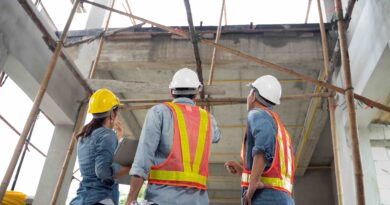What 2025 Will Look Like in Infrastructure
The new year will be a pivotal one of action, progress and results – providing the foundation for further infrastructure upgrades for years to come
By Joshua Rodriguez
On Jan. 20, the 60th presidential inauguration took place, ushering in a new administration. By now, we are about three years into the passage of the Infrastructure Investment and Jobs Act (IIJA). Luckily, we have entered into a new year and a new administration with significant momentum. New formula programs are bearing fruit, with traditional programs becoming more efficient and effective. Work is getting done.
While we will always find the implementation of legislation like the IIJA challenging, we are ironing out the details, fine-tuning the process and smoothing out the rough edges. We’ve also been perfecting our messaging. We won’t deny the early work on the new programs was not easy and it took time to learn and adjust. But our water, power and transportation professionals are good at doing the hard stuff and working together – we’ve found our way.
The driving force behind getting the hard stuff done is the connections we’ve made, the cooperation we’ve committed to, and the collaboration that’s resulted. Collaborations like the Joint Office of Energy and Transportation have brought together the Department of Energy and the Department of Transportation to deploy electric vehicle charging units along roadways across the country. Without the collaboration of those two agencies, EV charging deployment would be three times as hard. We’ve also seen examples of collaboration at a more granular, community level. With record funding, various sectors have expanded their respective systems and networks. Thanks to cooperation and collaboration, we’ve seen significant improvements in a “dig once” policy and strategy in support of transportation, broadband, water, and power infrastructure projects nationwide.
When water, power, broadband and transportation projects bring simultaneous improvements to communities, quality of life and economic benefits quickly begin to compound for residents.”
We’ve made our connections and unwound the kinks, but what should we expect in 2025? While projects and progress remained steady in the early months of 2024, as we approached the end of the year, we began to see an accelerated rate of progress. We can expect this trend of acceleration to hold steady, if not significantly improve, in early 2025.
A range of factors may impact our headway on infrastructure, but in 2025, several key ones will accelerate the rate of progress. First, many formula programs require sub-allocations and all our critical infrastructure sectors received historic discretionary grant funding through the IIJA for communities large and small. Although that funding is already flowing, many localities got a later start than the states and are facing challenges. Yet, in 2025, we will see that same increased momentum on infrastructure renewal at the local level that states experienced in 2024. Additionally, because states share many “lessons learned” with their local counterparts, communities should expect an “easier lift” going forward towards overcoming grant funding those challenges.
Another key factor we can expect to accelerate progress is the influence of the impacts of projects on our states, cities and rural communities. As we successfully start and complete a range of beneficial infrastructure endeavors, the administrative and planning process – including messaging, public involvement, permitting and contracting – becomes easier as project proponents receive less scrutiny and criticism from regulators and the stakeholders.
Another factor expected to influence the rate of infrastructure progress in 2025 is the increased number of innovative projects on the drawing boards – along with new technologies to support them. When agencies and project oversight organizations become comfortable with the completion and execution of the traditional projects under their review, we expect that confidence will provide for a swifter path to approval of more innovative projects and the new technologies associated with them. With a broader collection of eligible projects, states and communities will find greater license to propose projects that traditionally may have been off the table for consideration.
Finally, while this factor is more of a feeling of acceleration and less of a concrete influence, the concept of “compounding benefits” is expected to influence a perceived rate of progress in 2025. When water, power, broadband and transportation projects bring simultaneous improvements to communities, quality of life and economic benefits quickly begin to compound for residents. If a community lacks healthy food choices because it lacks the critical infrastructure to support a grocery store, those improvements should quickly attract such facilities – providing a major beneficial development for all residents.
Joshua Rodriguez is the program director for environment at AASHTO.



